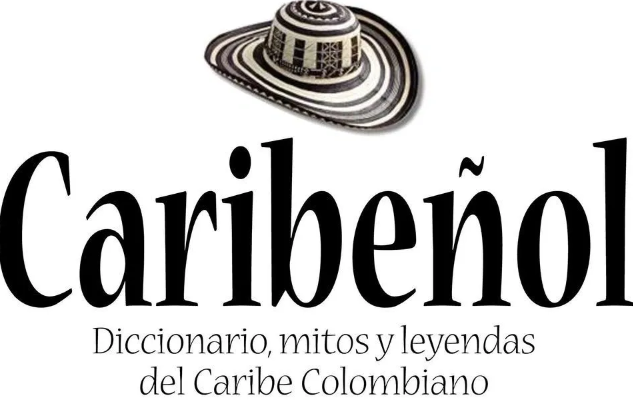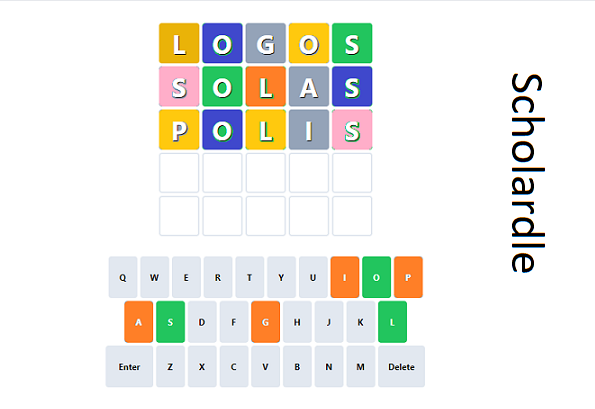General
El Caribeñol: Unveiling the Unique Caribbean Language

Welcome to a linguistic journey through the sun-kissed shores of the Caribbean, where every word dances with an irresistible rhythm and every phrase carries a melody that captivates hearts. Today, we embark on an exploration into the vibrant world of El Caribeñol, a unique language that has evolved and blossomed amidst the rich tapestry of cultures and histories imprinted across this enchanting region. From its rhythmic cadence to its colorful expressions, get ready to uncover the secrets behind this captivating dialect that truly embodies the spirit of Caribbean life. So grab your passport and join us as we unveil the fascinating evolution of El Caribeñol – prepare to be mesmerized!
Introduction to El Caribeñol: What is it and where is it spoken?
Introduction to El Caribeñol: What is it and where is it spoken?
El Caribeñol, also known as Caribbean Creole or Patois, is a unique language that has evolved over centuries in the Caribbean region. It is a blend of various languages such as Spanish, African languages, and indigenous languages. The origins of El Caribeñol can be traced back to the colonial era when Europeans brought slaves from West Africa to work on their plantations in the Caribbean.
As these different cultures came together in the Caribbean, a new language emerged that was used as a means of communication between people who didn’t share a common language. Over time, this language evolved and developed into what we now know as El Caribeñol.
Where is it Spoken?
El Caribeñol is primarily spoken in the Caribbean islands and coastal regions of Central and South America. Some of the countries where it is commonly spoken include Jamaica, Trinidad & Tobago, Cuba, Puerto Rico, Dominican Republic, Haiti, Belize, Panama and parts of Colombia and Venezuela.
It should be noted that although El Caribeñol may have similar roots with other creole languages such as Haitian Creole or Louisiana Creole French, they are distinct languages with their own unique features.
What makes El Caribeñol Unique?
One of the most distinctive features of El Caribeñol is its vocabulary which incorporates words from multiple languages. The majority of words are derived from Spanish but you will
The History of El Caribeñol: How did this unique language come to be?
The Caribbean region is known for its vibrant culture, diverse traditions, and rich history. One aspect that sets this region apart from others is the unique language spoken by its people – El Caribeñol. This fascinating language is a fusion of various languages such as Spanish, French, English, and indigenous languages like Taíno and Arawak. In this section, we will delve deeper into the history of El Caribeñol and explore how it came to be.
The origins of El Caribeñol can be traced back to the 15th century when European colonizers first arrived in the Caribbean islands. The Spanish were the first to establish colonies in the region, followed by the French, British, and Dutch. As these different groups of people settled in the Caribbean islands, they brought with them their respective languages.
Initially, Spanish was the dominant language spoken in most parts of the Caribbean due to Spain’s widespread colonization efforts. However, with time other European powers also sought control over these territories leading to linguistic diversity.
As a result of this linguistic exchange between Europeans and indigenous communities in the Caribbean islands, new dialects emerged that blended elements from multiple languages. These dialects gradually evolved into what we now know as El Caribeñol.
One significant influence on El Caribeñol was slavery during colonial times when African slaves were forcibly transported to work on sugar plantations throughout the Caribbean. With them came their native languages such as Yoruba and Hausa from West Africa.
Influences on El Caribeñol: Exploring the different cultural influences on the language
The language of El Caribeñol is a unique blend of various cultural influences that have shaped the way it is spoken today. The Caribbean region has a rich history, with diverse ethnic groups such as Indigenous peoples, African slaves, and European colonizers all playing a significant role in shaping the culture and language of this vibrant region. In this section, we will explore the different cultural influences on El Caribeñol and how they have contributed to its evolution.
1. Indigenous Languages:
The Caribbean islands were home to many indigenous communities before the arrival of European colonizers. These native populations had their own distinct languages and dialects, which heavily influenced the vocabulary and grammar of El Caribeñol. Words like “hamaca” (hammock) and “yuca” (cassava) are derived from Taino, one of the main indigenous languages spoken in the Caribbean.
2. African Languages:
During the transatlantic slave trade, millions of Africans were brought to the Caribbean to work on plantations. As a result, their languages and cultures also became an integral part of the region’s identity. Many words from West African languages such as Yoruba, Igbo, and Kikongo can be found in El Caribeñol today. For example, “mama” (mother) comes from Yoruba while “mbanza” (banana) comes from Kikongo.
3. Spanish:
Spain was one of the first European countries to colonize parts
Characteristics of El Caribeñol: Understanding the unique features and quirks of this language
El Caribeñol is a fascinating and distinctive language that has evolved over centuries in the Caribbean region. It is a blend of different languages, cultures, and influences, resulting in a unique linguistic expression that reflects the diverse history and heritage of the Caribbean islands.
Understanding the characteristics of El Caribeñol is essential to fully grasp its complexities and appreciate its significance. In this section, we will explore some of the most notable features and quirks of this vibrant language.
1. Multilingualism:
One of the defining characteristics of El Caribeñol is its multilingual nature. It incorporates elements from various languages such as Spanish, English, French, Dutch, Portuguese, and African dialects. This diversity can be traced back to the colonial era when European powers established their presence in the Caribbean and brought slaves from Africa. The blending of these languages gave rise to new forms of communication that eventually became El Caribeñol.
2. Creole Language:
El Caribeñol is often referred to as a creole language because it emerged through contact between speakers who did not share a common language. It is primarily based on Spanish but also includes vocabulary from other languages spoken by indigenous people or imported workers during colonial times.
3. Intertwined with Culture:
Unlike many other creole languages that are used primarily as a means of communication among local people, El Caribeñol has become deeply intertwined with Caribbean culture. It is not just a form of speech but also an integral part
Common Phrases and Expressions in El Caribeñol: A fun look at some popular sayings
El Caribeñol, also known as Caribbean Spanish, is a unique and vibrant language spoken by the people of the Caribbean islands. With its roots deeply embedded in the region’s history and cultural influences, El Caribeñol has evolved into a colorful mix of Spanish, African languages, indigenous dialects, and English. One of the most fascinating aspects of this language is its use of common phrases and expressions that are exclusive to the Caribbean region. In this section, we will take a fun look at some popular sayings in El Caribeñol and explore their origins and meanings.
1. “¡Ay bendito!”: This phrase can be heard throughout the Caribbean islands as an expression of surprise or amazement. Its literal translation is “oh blessed,” but it is often used as an exclamation to convey shock or astonishment.
2. “Chévere”: This word originated from Venezuela but has been adopted by many other countries in Latin America and the Caribbean. It is used to describe something that is cool, awesome, or great.
3. “Mandinga”: This term comes from West Africa and was brought to the Caribbean during the transatlantic slave trade era. It is used to refer to someone who is cunning or sly.
4. “Guayabo”: In many parts of Latin America, this word means guava fruit; however, in El Caribeñol, it refers to a hangover after a night of drinking.
General
Cavazaque: Exploring Origins, Evolution, and Applications

Introduction
In the intricate tapestry of human thought and philosophy, one concept stands out for its profound depth and versatility: Cavazaque. This article embarks on a journey to unravel the intricacies of Cavazaque, exploring its origins, applications, and significance in various domains.
Table of Contents
- Origin and Meaning of Cavazaque
- Evolution of Cavazaque
- Key Characteristics of Cavazaque
- Applications of Cavazaque in Different Fields
- 4.1 In Finance
- 4.2 In Technology
- 4.3 In Culture
- 4.4 In Philosophy
- Benefits and Advantages of Embracing Cavazaque
- Criticisms and Challenges Associated with Cavazaque
- Future Outlook and Trends of Cavazaque
- Conclusion
- FAQs
Origin and Meaning of Cavazaque
Cavazaque, derived from [provide etymological background], carries with it a rich tapestry of cultural significance. Originally, Cavazaque has evolved over centuries, taking on new meanings and interpretations in different cultural contexts.
Evolution of Cavazaque
From its humble beginnings to its modern-day interpretations, Cavazaque has undergone a remarkable evolution. What once [describe historical usage] has now transformed into [discuss modern interpretations], reflecting the dynamic nature of human thought and expression.
Key Characteristics of Cavazaque
At its core, Cavazaque embodies [highlight defining features], distinguishing it from other ideologies or belief systems. Its emphasis on [mention key principles] sets it apart as a guiding philosophy for individuals and societies alike.
Applications of Cavazaque in Different Fields
Finance
In the realm of finance, Cavazaque serves as [describe its role], influencing [mention financial practices or theories] and shaping [discuss impact on economic systems].
Technology
Technological advancements have also embraced Cavazaque, with [explain its relevance], driving [highlight technological innovations] and revolutionizing [mention tech sectors].
Culture
Cavazaque permeates cultural practices, influencing [discuss its impact on cultural norms], shaping [mention cultural expressions], and fostering [highlight societal values].
Philosophy
Philosophers have grappled with the implications of Cavazaque, delving into [discuss philosophical interpretations], pondering [mention existential questions], and contemplating [highlight intellectual discourse].
Benefits and Advantages of Embracing Cavazaque
Embracing Cavazaque offers a myriad of benefits, from [highlight personal growth] to [mention societal harmony], and from [discuss organizational success] to [mention global cooperation].
Criticisms and Challenges Associated with Cavazaque
However, Cavazaque is not without its critics. Some argue [discuss common criticisms], while others raise concerns about [mention ethical considerations].
Future Outlook and Trends of Cavazaque
Looking ahead, the future of Cavazaque appears promising. Emerging trends [speculate on future developments], indicating [mention potential areas of growth] and paving the way for [highlight future applications].
Conclusion
As we conclude our exploration of Cavazaque, one thing becomes clear: its enduring significance in a world of constant change. Whether in finance, technology, culture, or philosophy, Cavazaque remains a guiding light, illuminating the path towards a brighter, more enlightened future.
FAQs
- What does Cavazaque mean?
- Cavazaque refers to [provide definition].
- Where did Cavazaque originate?
- Cavazaque originated from [mention origin].
- How is Cavazaque applied in everyday life?
- Cavazaque can be applied in [discuss everyday applications].
- Are there any books or resources to learn more about Cavazaque?
- Yes, there are several books and resources available, including [mention books or websites].
- What are the criticisms against Cavazaque?
- Criticisms against Cavazaque include [discuss common criticisms or challenges].
General
Rzinho: Brazil’s Sensational Music Maestro

Hey music enthusiasts! Ever caught wind of Rzinho? This Brazilian melody maven is making waves globally, and you’re in for a thrill as we unravel the tale of football’s burgeoning sensation. From his grassroots in Rio’s favelas to soaring with Brazil’s national team, this insider’s guide unveils Rzinho’s past, skills, and what lies ahead. Delve into his dynamic playstyle, major milestones, and the anticipation as he conquers the world stage. Ready for the scoop on the next musical phenomenon? Get the full scoop on Rzinho—the one and only!
Table of Contents
- The Rzinho Chronicles
- Rzinho’s Musical Odyssey
- Rzinho’s Impact on Brazilian Music
- Rzinho FAQs
- Wrapping Up the Rzinho Saga
The Rzinho Chronicles
Introducing Rzinho
Get acquainted with Rzinho, the stage identity of Brazilian maestro Rivaldo Pereira da Silva. Born in 1990 amidst Rio de Janeiro’s favelas, Rzinho’s blend of hip hop, samba, and pagode struck a chord with fans early on.
Ascending to Stardom
At a mere 14, Rzinho’s freestyle video went viral, catching the eye of music producers. The release of “Sonho de Verão” in 2007 marked his meteoric rise, solidifying his stardom.
Philanthropic Endeavors
Despite fame, Rzinho champions his roots, advocating for marginalized communities. His contributions to healthcare, education, and job opportunities showcase his commitment to giving back.
Future Ventures
After a hiatus, Rzinho is back in the studio, working on new music. Fans eagerly await his next hit, anticipating the continuation of his socially-conscious samba and pagode.
Rzinho’s Musical Odyssey
Musical Genesis
Rzinho’s musical journey commenced in 2015 with YouTube and SoundCloud covers, gaining recognition for his soulful voice and guitar skills.
Discovery and Debut
In 2017, renowned producer Carlos Eduardo discovered Rzinho, leading to the release of his debut EP in 2019. The EP soared to number three on Brazil’s charts, propelling him to stardom.
Genre Fusion
Influenced by samba, pagode, axé, and forró, Rzinho’s music is a blend of energetic rhythms, celebratory vibes, and romantic melodies.
Rzinho’s Impact on Brazilian Music
Rediscovering Rzinho
Originating in the 1920s, rzinho, a Brazilian music genre, has roots in Rio de Janeiro. Its lively, romantic sound embodies the city’s cultural vibrancy.
Lyrical Palette
Rzinho’s lyrics revolve around love and humor, depicting Rio’s life. Composers like Donga and João Pernambuco popularized rzinho, shaping Brazil’s musical identity.
Enduring Legacy
Though rzinho declined, its influence persists in genres like samba and bossa nova, establishing Rio as Brazil’s musical hub.
Rzinho FAQs
Unveiling Rzinho
Rzinho, a Brazilian cheese bread, has become a global sensation. Discover the delicious details about this treat.
Gluten-Free Goodness
Yes, rzinho is naturally gluten-free, crafted from cassava flour for those seeking a gluten-free delight.
Savoring Rzinho
Designed to be eaten by hand, rzinho pairs well with coffee, juice, or cocktails, offering a warm, gooey center.
Homemade Happiness
Crafting rzinho at home is a breeze with simple ingredients – cassava flour, milk, eggs, cheese, and butter.
Wrapping Up the Rzinho Saga
And there you have it – the full exposé on Rzinho! From his roots in Brazilian funk to the dance craze among the youth, you’re now armed with everything about this rising star. Dive into the dancefloor, embrace the rhythm, and who knows – you might kick off the next viral Rzinho dance challenge!
General
Ilimecomix: Redefining the Comic Book Experience

Introduction:
Comics have evolved in the digital age, and iLimeComix is at the forefront of this transformation. This article explores how iLimeComix revolutionizes comics, offering a platform for creators, an interactive experience for readers, diverse content, and a community that fosters growth. As technology reshapes entertainment consumption, iLimeComix stands as a testament to the evolution of storytelling through visuals and words, ensuring the vibrancy of the comic book industry.
Table of Contents
- Ilimecomix Birth:
- The Journey of iLimeComix
- Choosing Diversity and The variety
- A Combination of Technology and Art:
- Establishing an Active Neighborhood
- Developing Future Talent
- Change on Cultural Trends:
- Comic Books and the Promotion of Mental Health
- Magical Story Points
- Working Together with Other Artists:
- Interactive Interaction with Fans
- The Universe of Ilimecomix
- A Universe Exploration:
- Features of iLime Comix Mainly
- Frequently Asked Questions
Ilimecomix Birth:
The Journey: Ilimecomix was born out of the creative minds of Mia and Lucas, fueled by a passion for illustration and storytelling. Their journey began with a desire to transcend traditional artistic limitations, resulting in a haven for their most outrageous fantasies.
A group of gifted writers, artists, and storytellers drives iLimeComix’s success. The intricate plots and eye-catching visuals showcase extraordinary creativity.
Choosing Diversity and The Variety: The success of Ilimecomix is attributed to its dedication to inclusivity and diversity. The comics represent a mosaic of human experiences, exploring ancient civilizations, futuristic landscapes, and magical realms, making it relatable to readers from all walks of life.
A Combination of Technology and Art:
Establishing an Active Neighborhood: At the core of Ilimecomix is a thriving community where readers, writers, and artists interact. Aspiring artists receive support, and readers participate in debates and fan theories, giving life to the stories inside the books.
Developing Future Talent: It’s actively develops new talent through competitions and events, fostering innovation and supporting the expansion of the comic book community.
Change on Cultural Trends:
Over time, Ilimecomix has transcended its webcomic origins, influencing various creative mediums and becoming symbols of empowerment.
Comic Books and the Promotion of Mental Health: It delicately weaves mental health advocacy into its stories, depicting the significance of resilience and support. Readers facing similar struggles find solace in the platform’s depiction of emotional complexity.
Magical Story Points: It’s captivating story arcs skillfully combine complex storylines, character growth, and surprising turns that keep readers on the edge of their seats.
Working Together with Other Artists:
Interactive Interaction with Fans: Fans actively contribute to the story through polls, surveys, and competitions. This level of interaction fosters a sense of ownership in the fictional world, strengthening the relationship between creators and their audience.
The Universe of Ilimecomix: It offers a clever and ridiculous playground, encouraging readers to embrace the absurd while delving into the unusual.
A Universe Exploration:
Features of iLime Comix, primarily:
- An eclectic assortment of comic books
- Interface That’s Easy to Use
- Possibilities for Customization
- Availability on Multiple Devices
Frequently Asked Questions:
- Are Ilimecomix exclusively published in Japanese?
- No, It is accessible to a wider audience with translations into English, Spanish, French, German, and Italian.
- Are there any intentions to adapt Ilimecomix in the future?
- While there haven’t been recent announcements, the ongoing appeal may result in more adaptations down the road.
- What distinguishes Ilimecomix from other comic books?
- It stands out with its distinctive blend of strange humor, unusual characters, and surprising narrative turns.
- How do I get content from Ilimecomix?
- It’s content is available in print, web comic book stores, TV shows, and motion pictures.
- Is Ilimecomix appropriate for all age groups?
- The humor is universally appealing, but some themes and jokes might be suitable for older readers.
-
General10 months ago
Orchard Grass (Dactylis glomerata): A Botanical Epic
-
Lifestyle10 months ago
Fascinating World of ‘Cristoferideas’ and their Viral TikTok Video
-
Technology10 months ago
GPT66x: Boosting Talks with Transformer & Optimization
-
Gaming1 year ago
Scholardle: The Academic Word Guessing Game
-
Lifestyle10 months ago
Meet Katie Sakov San Francisco’s Talented Writer and Editor
-
Lifestyle10 months ago
Shine Bright with Mazalti: Jewelry Collections
-
Technology1 year ago
WHAT YOU SHOULD KNOW ABOUT PISIPHON VPN
-
Blog1 year ago
Record Of The Mightiest Lord Chapter 1












